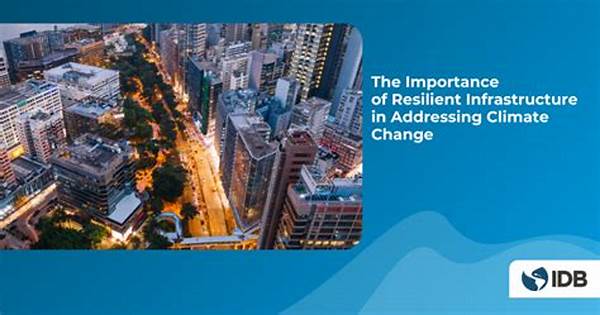Introduction to Resilient Infrastructure for Arctic Operations
The increasing strategic importance of the Arctic region has necessitated the development of resilient infrastructure for Arctic operations. This infrastructure must withstand extreme weather conditions, such as severe cold, high winds, and ice accumulation, while also being environmentally sustainable and technologically advanced. The harsh Arctic environment poses unique challenges that demand innovative engineering solutions tailored to the specific climatic conditions of the region. Moreover, resilient infrastructure for Arctic operations not only supports economic activities such as shipping, resource extraction, and scientific research but also ensures the safety and well-being of communities inhabiting the area. The development of such infrastructure requires a multidisciplinary approach, encompassing the expertise of engineers, environmental scientists, policymakers, and indigenous communities. Investing in resilient infrastructure for Arctic operations is crucial for minimizing environmental impacts and enhancing the region’s economic potential. Furthermore, as climate change continues to alter the Arctic landscape, the need for adaptive and robust infrastructural systems becomes even more pressing.
Challenges of Resilient Infrastructure for Arctic Operations
The development of resilient infrastructure for Arctic operations faces several challenges. These include extreme temperatures that can affect the integrity of materials, logistical difficulties in transporting construction materials to remote locations, and the need to minimize environmental disturbances. Furthermore, resilient infrastructure for Arctic operations must be able to accommodate the needs of local populations while respecting their cultural practices and traditions. Additionally, the rapid pace of climate change in the Arctic necessitates adaptive designs that can evolve with the changing environmental conditions. Lastly, securing adequate funding and international cooperation poses another significant challenge for establishing resilient infrastructure for Arctic operations.
Essential Components of Resilient Infrastructure for Arctic Operations
1. Material Durability: Structures used in Arctic operations must utilize materials capable of withstanding extreme cold and thermal expansion.
2. Logistical Planning: Ensuring seamless transport of materials and personnel to remote Arctic locations is crucial for the successful deployment of resilient infrastructure.
3. Environmental Considerations: Infrastructure must be designed to have minimal impact on the fragile Arctic ecosystem and include measures for mitigating any adverse effects.
4. Community Engagement: Developing resilient infrastructure for Arctic operations requires meaningful engagement with local communities to incorporate indigenous knowledge and priorities.
5. Adaptive Design: Infrastructure designs must be flexible enough to adapt to shifting climatic conditions as a result of ongoing climate change.
Collaborative Efforts in Developing Resilient Infrastructure for Arctic Operations
Resilient infrastructure for Arctic operations necessitates collaboration across multiple sectors and organizations. Governments, private entities, and non-profit organizations must work in concert to share resources and expertise. Such cooperative efforts can facilitate the exchange of knowledge and technologies crucial for addressing the most pressing challenges faced in Arctic infrastructure projects. Additionally, international agreements and partnerships can encourage standardization and regulatory compliance, ensuring that all stakeholders adhere to best practices. Moreover, integrating the perspectives of local communities, particularly indigenous populations, is critical for the sustainable development of resilient infrastructure for Arctic operations.
Technological Innovations in Resilient Infrastructure for Arctic Operations
Technological advancements play a pivotal role in creating resilient infrastructure for Arctic operations. State-of-the-art materials and construction techniques can enhance the durability and longevity of structures exposed to Arctic conditions. For instance, the utilization of advanced composites and nano-engineered materials can significantly improve performance. Equally important are innovations in energy systems, such as renewable sources and microgrids, which can provide reliable power even in remote regions. Additionally, using cutting-edge monitoring systems and remote sensing technologies can enable proactive maintenance and timely interventions, ensuring the continued functionality and safety of the infrastructure for Arctic operations.
Future Prospects for Resilient Infrastructure for Arctic Operations
Looking ahead, the future of resilient infrastructure for Arctic operations is promising, as technological innovations continue to evolve and the awareness of sustainability issues grows. Investment in research and development can lead to breakthroughs that further optimize construction practices and material usage. Furthermore, fostering strategic alliances and funding partnerships will be imperative for accelerating project timelines and expanding the scope of Arctic infrastructure projects. As such, resilient infrastructure development in the Arctic is poised to contribute significantly to economic growth, environmental conservation, and geopolitical stability.
Conclusion: The Critical Importance of Resilient Infrastructure for Arctic Operations
In summary, resilient infrastructure for Arctic operations is an indispensable endeavor for addressing the multifaceted challenges posed by the Arctic environment. Its successful implementation requires a concerted and collaborative effort from various sectors, underpinned by the latest technological innovations and sustainable practices. As climate change continues to reshape the Arctic, investing in robust and adaptive infrastructure will safeguard the region’s economic, environmental, and social interests. With careful planning and international cooperation, resilient infrastructure for Arctic operations can enhance the resilience and sustainability of the Arctic for generations to come.





